When it runs, a car engine produces a lot of heat and must be continuously cooled to avoid damage to the engine.
Generally, this is done by circulating coolant liquid usually water mixed, With an antifreeze solution through special cooling passages.
Some engines are cooled by air flowing over finned cylinder casings.
How the coolant circulates
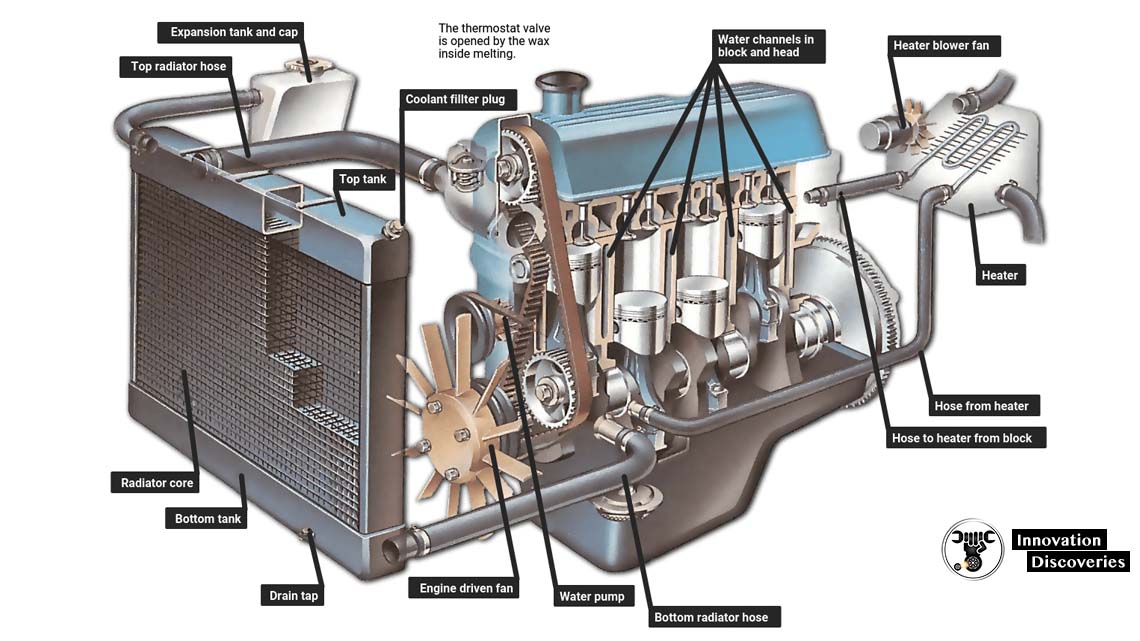
Note the bypass hose taking off hot coolant for the heater.
The pressure cap on the expansion tank has a spring-loaded valve
Which opens above a certain pressure.
A water-cooled cooling system
A water-cooled engine block and cylinder head have interconnected coolant channels running through them.
Read: WHAT IS AN ENGINE BLOCK?
At the top of the cylinder head, all the channels converge to a single outlet.
A pump, driven by a pulley and belt from the crankshaft, Drives hot coolant out of the engine to the radiator Which is a form of the heat exchanger?
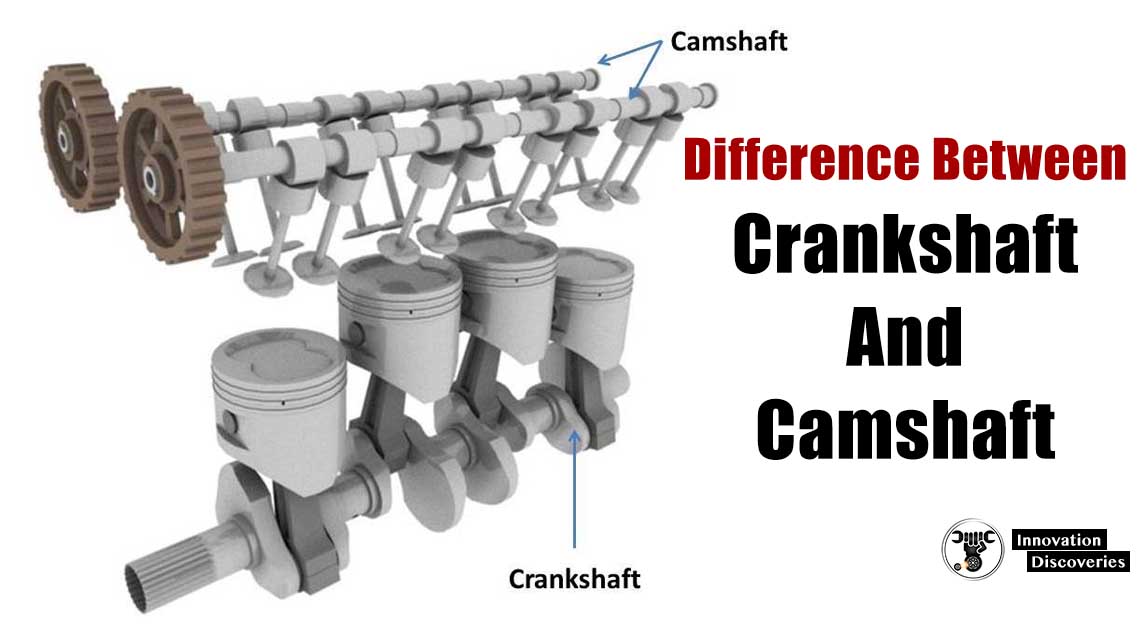
Unwanted heat is passed from the radiator into the air stream and the cooled liquid then returns to an inlet at the bottom of the block and flows back into the channels again.
Its natural tendency is to flow upwards, and the pump assists circulation.
The radiator is linked to the engine by rubber hoses and has a top and bottom tank connected by a core bank of many fine tubes?
The tubes pass through holes in a stack of thin sheet-metal fins, So that the core has a very large surface area and can lose heat rapidly to the cooler air passing through it.
On older cars the tubes run vertically, but modern Low-fronted cars have crossflow radiators with tubes that run from side to side.
The risk of boiling is avoided by increasing the pressure in the system Which raises the boiling point.
The extra pressure is limited by the radiator cap, which has a pressure valve in it.
Excessive pressure opens the valve, and the coolant flows out through an overflow pipe.
In a cooling system of this type, there is a continual slight loss of coolant if the engine runs very hot. The system needs topping up from time to time.
How the fan helps
The radiator needs a constant flow of air through its core to cool it adequately.
When the car is moving, this happens anyway But when it is stationary a fan is used to help the airflow.
The fan may be driven by the engine, but unless the engine is working hard, It is not always needed while the car is moving, So the energy used in driving it wastes fuel.
Other cars have an electric fan, also switched on and off by a temperature sensor.
To let the engine warm up quickly, the radiator is closed off by a thermostat Usually sited above the pump.
The thermostat has a valve worked by a chamber filled with wax. When the engine stops and cools, the valve closes again.
Water expands when it freezes and if the water in an engine freezes it can burst the block or radiator.
So, antifreeze usually ethylene glycol is added to the water to
Lower its freezing point to a safe level.
Air-cooled engine cooling systems
In an air-cooled engine block and cylinder head are made with deep fins on the outside.
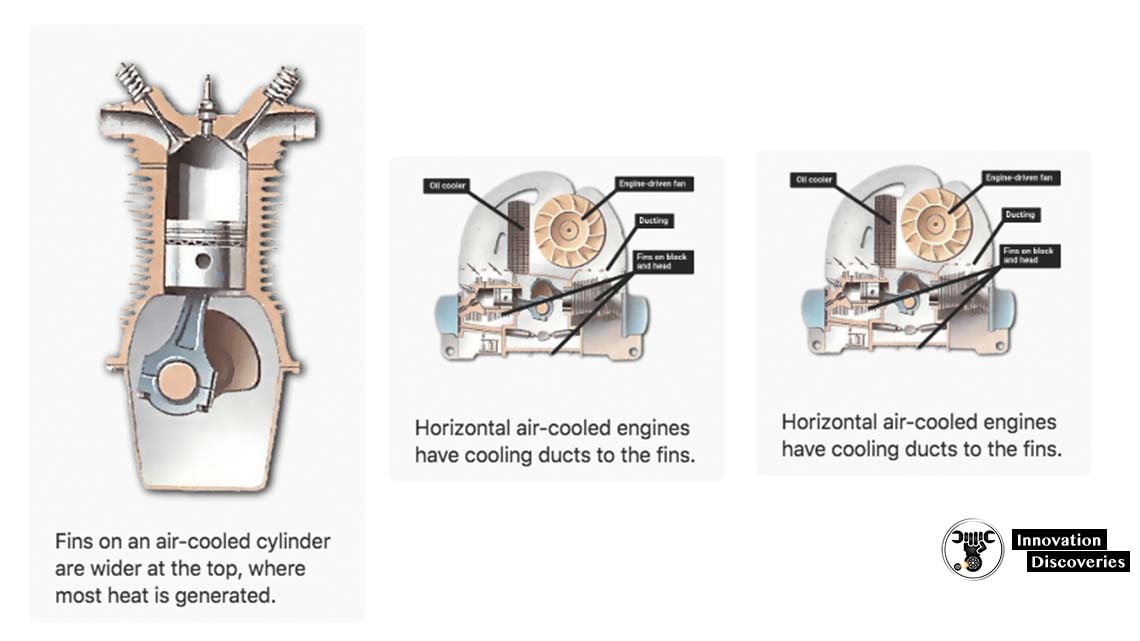
Frequently a duct runs all around the fins and an engine-driven fan blows air through the duct to take heat away from the fins.
A temperature-sensitive valve controls the amount of air being pushed around by the fan and keeps the temperature constant even on cold days.
Cooling the oil
Air-cooling through fins
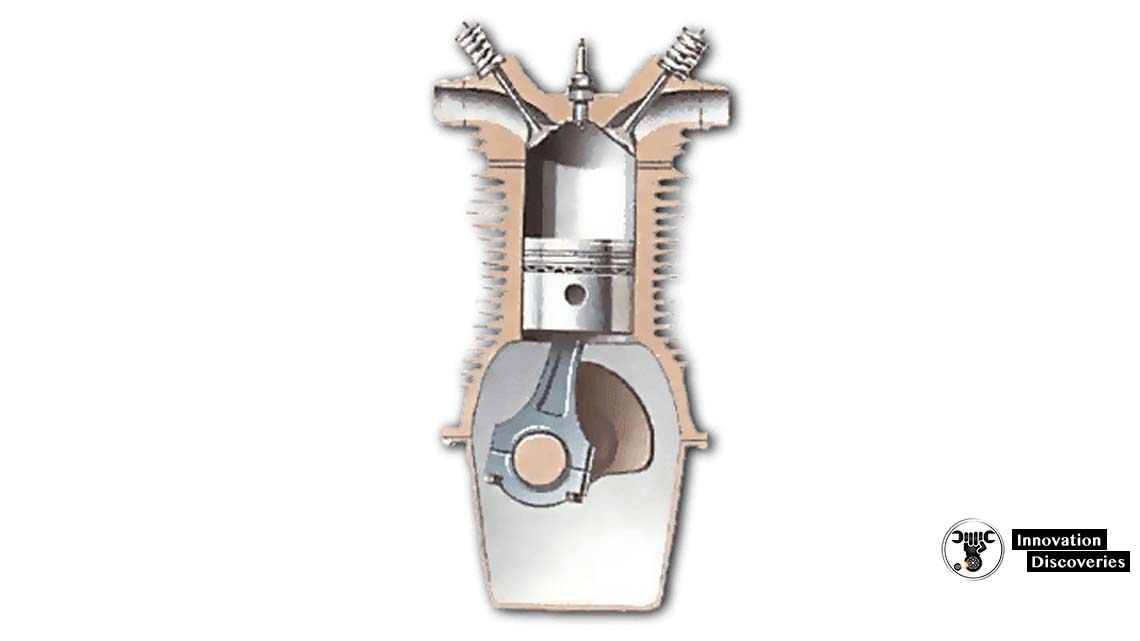
Where most heat is generated.

Water-valve heating system

The matrix temperature is controlled by regulating the amount of hot water going through it.
Also,read
How car heating and ventilation systems work


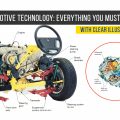
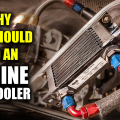
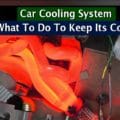
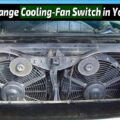
let me team one cylinder piston .
How does rings numbers of piston